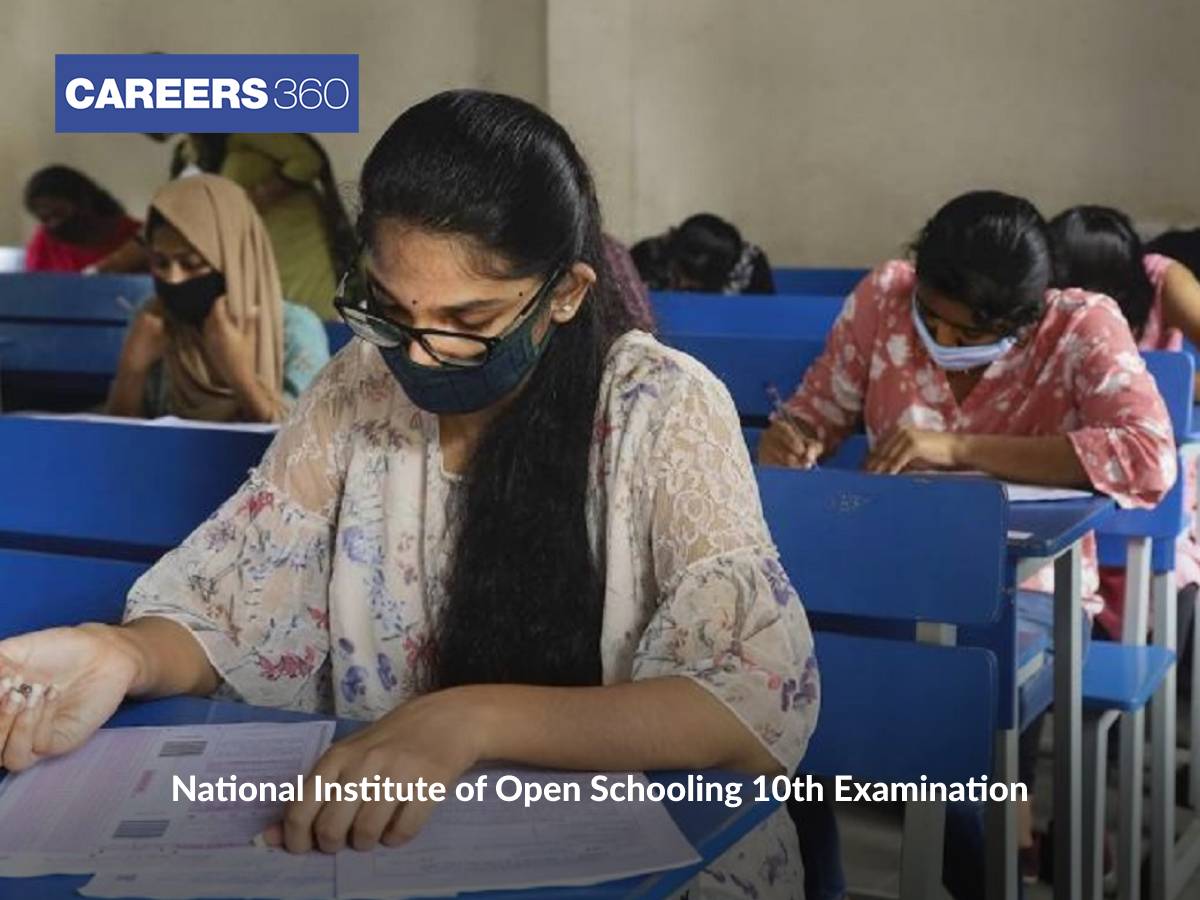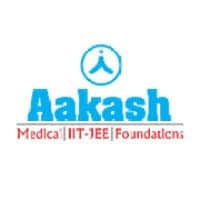Aakash Repeater Courses
Take Aakash iACST and get instant scholarship on coaching programs.
The National Institute of Open Schooling is responsible for conducting Secondary, Senior Secondary, public, and on-demand exams, along with DElEd exams. NIOS exam registration is held online mode. To get admission to NIOS, students are required to fulfil certain eligibility criteria. The admit card for both the April and October sessions is released one or two weeks before the commencement of exams. The NIOS conducts secondary examinations twice a year, in March/April and in October/November.
More about NIOS 10th exams 2025 October Session :
More about NIOS 10th exams 2025 April Session :
| Full Exam Name | National Institute of Open Schooling 10th examination |
| Short Exam Name | NIOS 10th |
| Conducting Body | National Institute of Open Schooling |
| Frequency Of Conduct | Twice a year |
| Exam Level | Matriculate |
| Languages | English +8 more |
| Mode Of Application | online |
| Application Fee | Online : 1800 |
| Mode Of Exam | offline |
| Exam Duration | 3 Hours |
NIOS 10th National Institute of Open Schooling 10th examination (session 2025)
Read More
Students applying for NIOS 10th exam 2025 should check the minimum eligibility criteria. Only eligible candidates will be able to apply for the NIOS class 10 exams.
The eligibility criteria for NIOS 10th exams are given below:

The admission for NIOS 10th commences with online registration. Students who want to apply for NIOS 10th exam 2025 can fill out the application form online. They should visit the official website to apply for NIOS 10th exams.
NIOS registration 2025 is conducted for class 10 in 3 streams as given below:
Follow the step-by-step guide given below for NIOS 10th registration-
Take Aakash iACST and get instant scholarship on coaching programs.
The exam pattern of the NIOS 10th exam 2025 varies largely in two groups. The subject-wise time duration is as follows:
NIOS 10th Exam Pattern 2025
| Groups | Subject | Marks | Duration (in hours) |
| Group -A | English, Hindi, Urdu, Bengali, Telugu, Gujarati, Kannada, Punjabi, Nepali, Assamese, Marathi, Sanskrit, Malayalam, Odia, Arabic, Persian and Tamil. | 100 | 3 |
| Group-B | Mathematics (Theory + Practical) | 85+15 = 100 | 2.5 + 3 |
| Science (Theory + Practical) | 85+15 = 100 | 2.5 + 3 | |
| Social Science, Economics, Business Studies, Psychology, Indian Culture and Heritage, Accountancy | 100 Marks for each | 3 hours each | |
| Home Science (Theory + Practical) | 85+15 = 100 | 2.5 + 3 | |
| Painting (Theory + Practical) | 30 + 70 = 100 | 1.5 + 3 | |
| Data Entry Operations (Theory + Practical) | 40+60 = 100 | 2 + 2 |
English: Unit 03
Science: Unit 01
Science: Unit 02
Science: Unit 03
Science: Unit 04
Science: Unit 05
Science: Unit 06
Science: Unit 07
Social science: Unit 01
Social science: Unit 02
Social science: Unit 03
Social science: Unit 04
Social science: Unit 05
Social science: Unit 06
Social science: Unit 07
Business studies: Unit 01
Business studies: Unit 02
Business studies: Unit 03
Business studies: Unit 04
Business studies: Unit 05
Business studies: Unit 06
Business studies: Unit 07
Psychology: Unit 01
Psychology: Unit 02
Psychology: Unit 03
Psychology: Unit 04
Psychology: Unit 05
Psychology: Unit 06
Psychology: Unit 07
Psychology: Unit 08
Psychology: Unit 09
Psychology: Unit 10
Psychology: Unit 11
Psychology: Unit 12
Psychology: Unit 13
Psychology: Unit 14
Psychology: Unit 15
Psychology: Unit 16
Psychology: Unit 18
Psychology: Unit 19
Psychology: Unit 20
Psychology: Unit 21
Psychology: Unit 22
Psychology: Unit 23
Psychology: Unit 24
Psychology: Unit 25
Psychology: Unit 26
Psychology: Unit 27
Psychology: Unit 28
Psychology: Unit 29
Psychology: Unit 31
Psychology: Unit 32
Home science: Unit 02
Home science: Unit 03
Home science: Unit 04
Home science: Unit 05
Home science: Unit 06
Home science: Unit 07
Home science: Unit 08
Mathematics: Unit 01
Mathematics: Unit 02
Mathematics: Unit 03
Mathematics: Unit 04
Mathematics: Unit 05
Mathematics: Unit 06
Indian culture and heritage: Unit 01
Indian culture and heritage: Unit 02
Indian culture and heritage: Unit 03
Indian culture and heritage: Unit 04
Indian culture and heritage: Unit 05
Indian culture and heritage: Unit 06
Indian culture and heritage: Unit 07
Indian culture and heritage: Unit 08
Indian culture and heritage: Unit 09
Indian culture and heritage: Unit 10
Indian culture and heritage: Unit 11
Indian culture and heritage: Unit 12
Indian culture and heritage: Unit 13
Indian culture and heritage: Unit 14
Indian culture and heritage: Unit 15
Indian culture and heritage: Unit 16
Indian culture and heritage: Unit 17
Indian culture and heritage: Unit 18
Indian culture and heritage: Unit 19
Indian culture and heritage: Unit 20
Indian culture and heritage: Unit 21
Indian culture and heritage: Unit 22
Indian culture and heritage: Unit 23
Indian culture and heritage: Unit 24
Indian culture and heritage: Unit 25
Indian culture and heritage: Unit 26
Indian culture and heritage: Unit 27
Indian culture and heritage: Unit 28
Indian culture and heritage: Unit 29
Indian culture and heritage: Unit 30
Indian culture and heritage: Unit 31
Indian culture and heritage: Unit 32
Economics: Unit 01
Economics: Unit 02
Economics: Unit 03
Economics: Unit 04
Economics: Unit 05
Economics: Unit 06
Economics: Unit 07
Economics: Unit 08
Economics: Unit 09
Economics: Unit 10
Economics: Unit 11
Painting: Unit 01
Painting: Unit 02
Painting: Unit 03
Date entry operations: Unit 01
Date entry operations: Unit 02
Date entry operations: Unit 03
Date entry operations: Unit 04
Date entry operations: Unit 05
Date entry operations: Unit 06
Date entry operations: Unit 07
Date entry operations: Unit 08
Date entry operations: Unit 09
Accountancy: Unit 01
Accountancy: Unit 02
Accountancy: Unit 05
Hindustani music: Unit 01
Hindustani music: Unit 02
Hindustani music: Unit 03
Carnatic music: Unit 01
Students who attend open classes must maintain discipline since there are no regular classes. Here are some tips to prepare for the NIOS 10th exam 2025:
The National Institute of Open Schooling (NIOS) will announce the NIOS results for the October session in December 2025. Students will be able to check the NIOS results 2025 on the official website. They can access the result by entering their roll number in the given space. NIOS class 10th result incorporates the student's name, date of birth, roll number, subject, code, marks received, grades, and so on.
Steps to check the NIOS 10th result are given below:
01202403173 + 3 more
The institute conducted the NIOS Class 10 theory exam (April session) from April 9 to May 19, 2025.
The candidate will have to appear for exams at the NIOS exam center assigned to them based on their preferences.
Yes, Students can apply for NIOS class 10 admission directly in online mode.
Following documents are required to apply for NIOS class 10 admission:
Students can keep track of their admission through NIOS admission status window by entering reference number or email-ID.
If the candidate has passed at least one subject from the CBSE board then they can apply for NIOS admission under ToC to transfer their marks from CBSE to NIOS.
Yes, Students can appear for NIOS class 10 exams during the admission period which is 5 years from the date of admission.
The admission fee for NIOS 10th is Rs. 1800 for general male students, Rs. 1450 for general female students and Rs. 1200 for SC/ST/Ex-serviceman/PwD students. Rs.720 per subject are to be paid for each additional subject.
The minimum age to apply for NIOS class 10 admission is 14 years old.
Application Date
24 Jul, 2025 - 23 Aug, 2025
Application Date
01 Aug, 2025 - 31 Aug, 2025
Others
10 Aug, 2025 - 01 Sep, 2025
Admit Card Date
18 Aug, 2025 - 29 Aug, 2025
Late Fee Application Date
18 Aug, 2025 - 22 Aug, 2025
Exam Date
22 Aug, 2025 - 22 Aug, 2025
Application Date
30 Aug, 2025 - 30 Aug, 2025
Application Date
30 Aug, 2025 - 30 Aug, 2025
Application Date
30 Aug, 2025 - 30 Aug, 2025
Exam Date
24 Sep, 2025 - 24 Sep, 2025
Exam Date
25 Sep, 2025 - 25 Sep, 2025
Hello,
Yes, you can appear for NIOS in 2025 and still be eligible for BITSAT and JEE Mains, provided you meet the age and academic criteria. Ensure you study the required subjects and score well. Both exams accept NIOS qualifications, so focus on achieving high marks to enhance your chances of securing a seat in prestigious institutions. Check the official guidelines for any specific eligibility updates.
Hope this helps you,
Thank you
You can check diploma courses after 10th class and NIOS courses and certificates available. You can also visit the university's official websites and check the sections of admissions or courses offered or contact the admissions offices directly to learn about the programs offered after 10th through NIOS board .
To get admission to NIOS (National Institute of Open Schooling) for the October 2024 exam, visit the official NIOS board website. Complete the NIOS online registration by filling out the required forms, uploading necessary documents, and paying the NIOS exam fee . Ensure you check the registration deadlines and other details. After successful registration, you will receive study materials and information of your NIOS examination centre . Regularly check the NIOS website for updates and important announcements regarding the NIOS exam schedule and other things.
To get admission to the 11th standard without your Class 10th NIOS result , contact the school you are interested in and explain your situation. Many institutions allow provisional admissions based on internal assessments, and previous academic performance, or conditional admissions are also done with the pending results. Ensure you submit the NIOS 10th result marksheet as soon as it is available to secure your admission.
Hello,
After completing your 10th through NIOS, you can:
Enroll directly in NIOS for 12th grade.
Check with regular schools/colleges for admission.
Look into state boards/private boards that accept NIOS students for 12th grade. This will definitely help you.
Hope this helps you,
Thank you

Take Aakash iACST and get instant scholarship on coaching programs.

This ebook serves as a valuable study guide for NEET 2025 exam.

This e-book offers NEET PYQ and serves as an indispensable NEET study material.

As per latest syllabus. Physics formulas, equations, & laws of class 11 & 12th chapters
As per latest syllabus. Chemistry formulas, equations, & laws of class 11 & 12th chapters
As per latest 2024 syllabus. Study 40% syllabus and score upto 100% marks in JEE